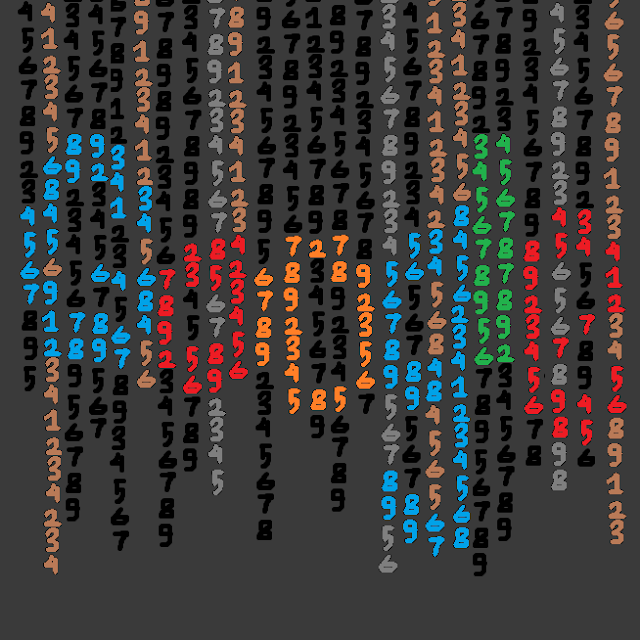Charted - Decline of the Traditional 9–5 Job - Blog No. 116
The Rise of Freelancing, Gig Work, and Flexible Careers (Visual Capitalist 2025)
Once upon a time, the sound of an alarm clock at 6:30 a.m. was the universal call to join the daily hustle. Millions dressed in slacks or heels, grabbed lukewarm coffee, and braced themselves for rush-hour traffic. The destination? An office, a cubicle, a place where "working 9 to 5" wasn’t just a Dolly Parton song—it was a way of life.
But not anymore.
According to Visual Capitalist’s 2025 report, the traditional 9–5 job is in a steady decline. This isn't merely a blip on the economic radar—it’s a seismic shift. The future of work is no longer tied to office chairs, fluorescent lighting, or rigid schedules. Instead, it’s fluid, mobile, and increasingly digital.
Let’s dive into the data, the story, and the societal transformation behind the fall of the 9–5 and the meteoric rise of freelancing, gig work, and flexible careers.
Related
From Uniform Hours to Unique Paths: A Global Perspective
In 2025, only 42% of global workers are in traditional full-time employment, according to Visual Capitalist. That’s a dramatic drop from 52% just five years ago.
In countries like the U.S., U.K., Canada, and Germany, full-time employment still exists—but the cracks are widening. Younger generations are eschewing it altogether. In fact:
-
63% of Gen Z workers prefer freelance or gig-based roles.
-
58% of Millennials report prioritizing job flexibility over salary.
-
47% of companies now hire remote or contract workers as their primary workforce.
The COVID-19 Catalyst
While freelancing and side hustles existed before, the COVID-19 pandemic in 2020 accelerated what had been a slow-burning trend. Remote work went from novelty to necessity. And when offices reopened, not everyone wanted to go back.
Instead, a new question took root: Why conform to a rigid schedule when productivity could flourish on your own terms?
By 2025, millions have answered that question by walking away from the 9–5 entirely.
The Rise of the Freelance Nation 🌍
Freelancing—once viewed as unstable or temporary—has now matured into a legitimate, lucrative career path. Here’s what Visual Capitalist 2025 shows:
| Year | Global Freelancers | % of Workforce |
|---|---|---|
| 2015 | 77 million | 17% |
| 2020 | 122 million | 25% |
| 2025 | 177 million | 38% |
Why Freelancing Works:
-
Autonomy: Choose your clients, your projects, your hours.
-
Diversity: Work across industries—design, marketing, coding, writing.
-
Technology: Platforms like Upwork, Fiverr, and Toptal make global freelancing seamless.
“I make more now in three days a week than I did working 40 hours at a tech firm,” says Jenna M., a freelance UI/UX designer from Austin. “And I work from Costa Rica.”
Stories like Jenna’s are not anomalies—they’re becoming the norm.
Gig Economy: From Side Hustles to Full-Time Incomes
The gig economy—a.k.a. short-term, task-based work—has exploded. Whether it’s food delivery, ridesharing, or virtual tutoring, the gig economy is rewriting employment rules.
Visual Capitalist 2025 Gig Economy Stats:
-
1.6 billion gig workers globally
-
$455 billion in earnings worldwide
-
Top industries: Transportation, creative services, tutoring, and pet care
What started with Uber and DoorDash has transformed into a sprawling marketplace of digital labor.
Even specialized gigs—like voiceover acting or data annotation—are booming, thanks to AI-driven platforms.
Flexibility > Stability? Not Quite.
It’s tempting to romanticize this shift, but let’s be real: freelancing and gig work come with challenges.
-
No employer-paid health insurance
-
Lack of retirement benefits
-
Income instability
-
Isolation and burnout
Yet, for many, freedom outweighs fear.
Visual Capitalist’s 2025 worker sentiment report reveals:
-
78% of freelancers say they’re “happier” now than in their previous full-time roles.
-
52% of gig workers say they earn more annually now than pre-2020.
-
82% want better government support, like portable benefits and fair digital labor laws.
Why the 9–5 is Struggling to Survive
Here’s why the traditional office-bound job is fading:
1. Technology
-
Cloud computing and mobile apps have untethered workers from offices.
-
Project management platforms (like Asana or Trello) keep remote teams aligned.
-
AI automates repetitive office work, allowing freelancers to handle more tasks efficiently.
2. Cultural Shift
-
Younger generations value work-life balance, purpose, and location freedom.
-
“Hustle culture” has been replaced by “alignment culture”—work that fits life, not the other way around.
3. Economic Shifts
-
Companies seek cost-efficiency. Contractors save on overhead costs.
-
The rise of the “creator economy” means more people monetize their skills, audiences, and passions.
The Creator Economy: A Freelance Frontier
In 2025, the creator economy—a subset of freelance work—is thriving.
-
Over 300 million creators worldwide earn money from platforms like YouTube, TikTok, Substack, and Patreon.
-
Visual Capitalist reports that creator income is outpacing traditional jobs in some sectors like education, entertainment, and niche consulting.
Case in point: A former high school teacher turned YouTube math tutor earns $120,000 annually—double his old salary.
Corporate America’s Response
While startups quickly adapted, larger corporations were slower—until they had to evolve.
What big companies are doing in 2025:
-
Hiring more freelancers for project-based roles.
-
Offering hybrid models: 2 days in-office, 3 days remote.
-
Launching internal gig platforms where employees "bid" on internal short-term projects.
Even giants like Microsoft and Amazon are leaning into talent networks instead of strict organizational hierarchies.
The Dark Side of Flexibility
Not all is rosy in the freelance revolution. Job security, fair pay, and mental health remain concerns.
-
52% of freelancers report inconsistent income month-to-month.
-
29% say they work longer hours than before, blurring the lines between work and rest.
-
Mental health services and community support are underdeveloped in this landscape.
“You can feel like you’re on an island,” says Kofi A., a freelance developer. “You get freedom, but you also need discipline, structure, and sometimes... just someone to talk to.”
Governments and Policies: Playing Catch-Up
Labor laws were built for factories, not freelancers. But that’s starting to change.
In 2025:
-
The EU introduced the “Freelance Fairness Act”, ensuring minimum rates and insurance protections.
-
California and New York launched pilot programs for portable benefits—freelancers keep their benefits across jobs.
-
Countries like Estonia and Singapore offer digital nomad tax breaks and remote worker visas.
Governments are starting to realize: if you can’t stop the freelance wave, you better build a boat.
What the Future Holds: Work in 2030
Visual Capitalist predicts by 2030:
-
Over 50% of the global workforce will be freelance or gig-based.
-
Digital credentials and AI portfolios will replace traditional résumés.
-
The concept of “retirement” will evolve into life-long earning portfolios.
-
Office towers may convert into co-living/co-working hybrid spaces.
In other words: the future of work is less about where and more about how and why.
How to Thrive in the New Era
For those navigating the shift, here are practical tips:
-
Upskill Continuously: Platforms like Coursera, LinkedIn Learning, and YouTube make learning constant.
-
Build a Brand: Your online presence is your résumé now.
-
Join Networks: Online communities like Indie Hackers, Freelancers Union, and Discord servers provide support.
-
Prioritize Well-being: Create boundaries. Take breaks. Talk to others.
-
Diversify Income: Don’t rely on one client or one gig—create multiple income streams.
Conclusion: Goodbye 9–5, Hello Freedom?
The data from Visual Capitalist 2025 paints a clear picture: we are witnessing the end of the traditional 9–5 job as the default career model.
What’s rising in its place is not just freelancing or gig work—it’s a redefinition of work itself.
From morning commutes to remote beaches, from cubicles to co-working spaces, from bosses to clients—how we earn a living is evolving. Fast.
And for millions, this isn’t a crisis. It’s an opportunity.
The 9–5 job may not be dead, but it's certainly no longer king. In its place? A flexible, diverse, empowering way to work—and live.
Related
References:
Visual Capitalist – Now Available: 2025 Global Forecast Report
https://www.visualcapitalist.com/now-available-2025-global-forecast-report/-
Visual Capitalist – Charted: How Generations Will Shape the Workforce by 2035
https://www.visualcapitalist.com/charted-how-generations-will-shape-the-workforce-by-2035/ -
Visual Capitalist – Prediction Consensus: 2025 Midyear Update
https://www.visualcapitalist.com/prediction-consensus-2025-midyear-update/ -
Visual Capitalist – Charted: Unemployment Rates in OECD Countries in 2025
https://www.visualcapitalist.com/charted-unemployment-rates-in-oecd-countries-in-2025/ -
Visual Capitalist – Ranked: Occupations With the Most Projected Job Cuts
https://www.visualcapitalist.com/ranked-the-fastest-shrinking-jobs-in-the-u-s-2023-2033f/ -
Visual Capitalist – Charted: The Decline of Remote Work by Industry
https://www.visualcapitalist.com/charted-the-decline-of-remote-work-by-industry/ -
Visual Capitalist – Charted: Productivity Gains from Using AI
https://www.visualcapitalist.com/charted-productivity-gains-from-using-ai/ -
Visual Capitalist – Chart: The Jobs Most Impacted by AI
https://www.visualcapitalist.com/charted-the-jobs-most-impacted-by-ai/ -
Visual Capitalist – Visualizing the Decline of U.S. Manufacturing, by Sector
https://www.visualcapitalist.com/the-decline-of-u-s-manufacturing-by-sector/ -
Visual Capitalist – America’s Fastest Growing Industries By Employment Change
https://www.visualcapitalist.com/charted-americas-fastest-growing-industries-by-employment-change/ -
YouTube – “The Decline of the 9-to-5: Why 2025 Marks the End of Traditional Jobs”
https://www.youtube.com/watch?v=Q7Uh5ow1EFY
Additional Context Sources (not VC):
-
Forbes – Working 9 To 5? Prepare For Extinction
https://www.forbes.com/sites/jasonwingard/2024/08/26/working-9-to-5--prepare-for-extinction/ -
Business Today – 9-to-5 jobs are doomed: Reid Hoffman predicts their end by 2034
https://www.businesstoday.in/latest/corporate/story/9-to-5-jobs-are-doomed-linkedin-co-founder-reid-hoffman-predicts-their-end-by-2034-438837-2024-07-26 -
Tactical Investor – 9 to 5 is Dying: Adapt or Vanish!
https://tacticalinvestor.com/9-to-5-is-dying-adapt-or-vanish/ -
LinkedIn – The Future of Work: Why Traditional Jobs Are Disappearing
https://www.linkedin.com/pulse/future-work-why-traditional-jobs-disappearing-nisha-singh-o2asc -
Wikipedia – Gig economy
https://en.wikipedia.org/wiki/Gig_economy



Comments
Post a Comment